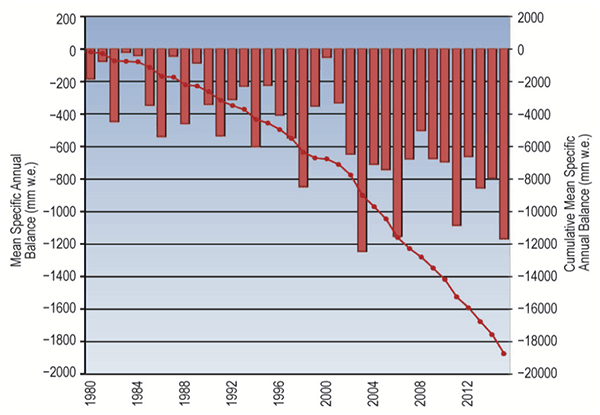One of the more reliable indicators of global warming, with fairly even temporal and spatial distribution, is the ongoing melt (mass loss) from alpine glaciers worldwide. Like many other variables, we’ve only tracked these comprehensively for the past fifty or sixty years. But the trends are unambiguous, occurring on all continents except Australia, which has been ice-free since for most of humanity’s existence, if not longer. In Africa, alpine glaciers occur in three locations (all in the mountainous east) and cover only 10,000 km2/3860 mi2. Currently, alpine glaciers cover 525,0000 km2/202,700 mi2 of the planet.
Mountain glaciers are extremely sensitive to climatic change, though with a lag. Changes in temperature and precipitation are, you might almost say, logged faithfully in their changing thickness and length. Alpine glaciers exist at altitudes where temperature permits, and are surrounded by more temperate lower elevations. For that reason their growth and shrinkage is an indicator of the local climatic balance. And though the individual year-to-year masses can vary, based on melt or accumulation, the decadal-scale decline is clear.
The World Glacier Monitoring Service (WGMS) tracks forty-one major alpine glaciers worldwide (somewhat like how the Dow 500 Index tracks a sampling of US companies) for climatic information. Groups like NOAA’s National Snow and Ice Data Center (NSIDC) uses this data in its own ongoing assessment of the global cryosphere. The WGMS’ records show an increasingly rapid trend in glacial loss.
Tomorrow: world climatic zones.
Be brave, and be well.











No comments:
Post a Comment